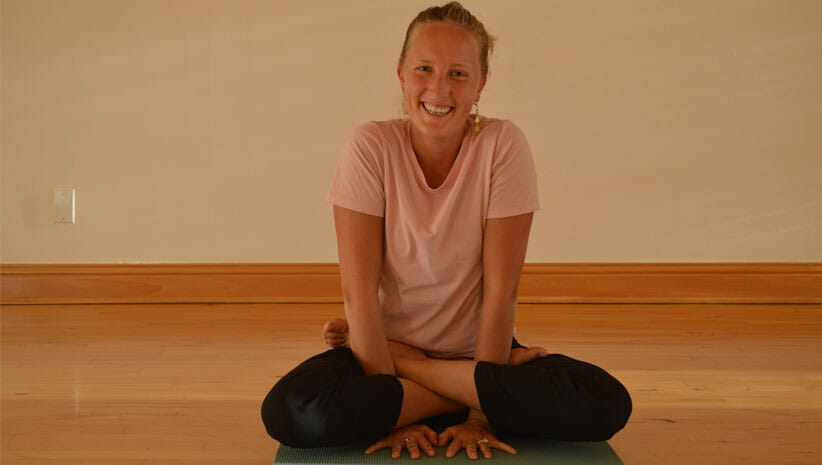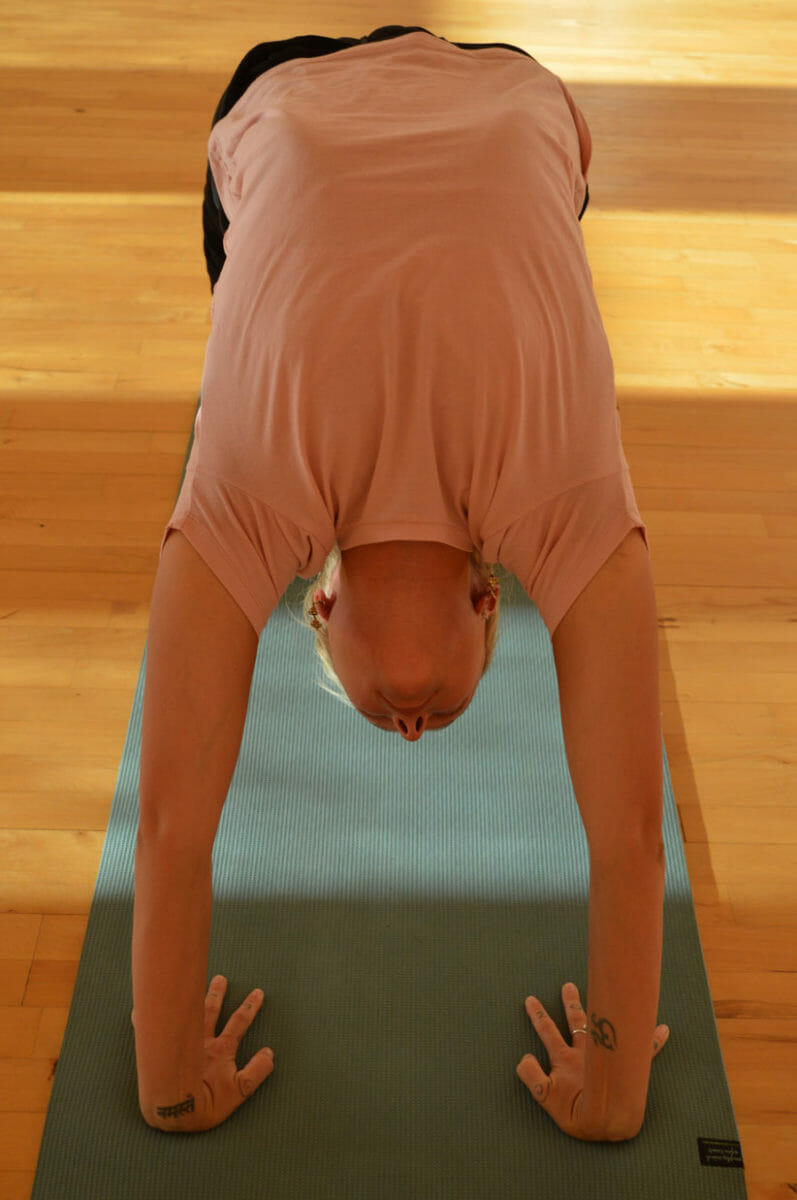
Rituals and Routines for Transitional Times
How do we keep practice alive, fresh, and rich with presence? When done regularly can we maintain an attitude of curiosity, of refined awareness? Ritual, or routine with intent, can lend support to daily and larger life transitions; practice is a part of that. Such rituals don’t have to be grandiose. They can be a minute, five minutes, or a half hour. When informed by our authentic aspirations and love, any time keeper is replaced by the heart. We start where we are with something sincere and manageable gaining confidence over time to extend a practice period as we receive the benefit and impact of our intentions bearing fruit.
Before creating a routine for yourself, or expanding the one you already have, consider what your intent is. Know what you are up to and for what purpose. Why do you practice? What are the expectations? What do you hope to gain? How do you create routines during transitions throughout the day that help you stay in the here and now? Start out by asking yourself these questions and apply your insights to your life.
Early Morning Reflections
The early morning hours of stillness when earth and animals have just begun to stir is a precious time for practice and reflection. Naturally, we are supported in this liminal space from the darkness of night into the light of day. It is an opportune moment for welcoming a new beginning. We ourselves might have gone into a space of deep settling and dream; possibly renouncing the day’s engagements so we wake refreshed to meet another moment in its’ true newness. How often does this happen though? A time when we don’t carry with us the echoes of previous turmoils and trouble, whether in body, thought, or felt sense. It is a challenge worthy of the victory to stand in the present moment…one that pairs well with dedication and perseverance. We have to be able to try again, and every day, when we rise, we are given a chance to do just that. That way we welcome this opportunity is up to us.
Practice Awareness and Tune In
If you will, take a moment now and sense the support that you are sitting on. Let your physical body attune to this support. As you begin to settle, tune into the feeling of your body and see if there are parts that might relax more deeply. Perhaps the jaw and tongue can release. Could you lower your shoulders away from the ears? Sensing into the abdomen, might it also relax? Feel the back of your body in contact with something…is the support soft? Firm? Is there any way you might move to be more comfortable? Trust the inherent intelligence of your body to make adjustments that generate a deeper sense of ease and connection.
From this place take a few fuller and conscious breaths and let a sigh out. Invite the entire body to release, to relax. Time all the time you need with this. When you feel ready – more alert, and that doesn’t mean without tension but rather with expanded awareness – ask yourself: How, in the past week, did I begin my day? What was the feeling tone? The qualities? What do I do first in the morning? Is there anything I would choose to shift? What would be my ideal start? If it is helpful, you could write some of these answers down and make practical steps towards them.

Listening to Our Soul’s Messages: Yoga for Transitional Times
During the night our soul speaks. We have access to its guidance, encouragement, and unwavering support. What follows in the days of our life is ample opportunity for application of these messages so we may live rich with vitality, choice, and listening. Or, perhaps we might start the day with a ‘same bullshit, different day’ mentality; during which we turn a blind eye to what is dynamic and alive, act mechanically, and repeat patterns of behavior that may not have second thought. If we are aware of making shifts, we have some agency depending on what we choose for ourselves. We have the power of choice.
Yoga in the Morning
If you have the opportunity to do a morning Yoga practice start with a moment of pause and centering. Attune to your body and ask it what it needs. Side stretches? Activity? A slow start towards more movement? Inversions? How do you know what your body is asking for? What does that feel like? Doing this allows you to stay present and mitigate the possibility of practice becoming overly regimented or done absentmindedly.
For me, in the morning, no matter what pose I am in I choose to pay attention to my body and mind. I bring mantra into the poses if I wake up with a thoughtful mind. I choose areas of concentration depending on the posture: the throat in bridge pose, plough, or shoulder stand; the heart in forward folds or tortoise; top of the head in headstand. I intend to feel what I am doing in a given asana or ‘situation.’ The same presence that I bring to practice is what I wish to bring to my day; that way practice is not something I do during an allotted time frame but rather something that is lived and embodied. Again, why do you practice?
I have found my morning routine most useful when I enter the space as a way to become present rather than with intent to achieve or get better. Yoga, whether it be on or off the mat, is not something to accomplish. It is a way of living life; the way we practice reflects upon the way we are as human beings. As Richard Rohr says “the way we do one thing is the way we do everything.” May your morning practice and beyond be filled with gentleness, refinement, and an acceptance that echoes of mercy.
Yoga Before Bed
Equally as important is the way we put ourselves to bed. If we go to sleep in a state of anger it has real potential to carry over into the dream space. The residue is felt, consciously or not, and can inform our decisions, our thoughts, even our sense of safety. One way the mind works is to perpetuate a story, to stay in control of what it knows. Way to go mind! Yet our nervous system longs for resolution of activation from high states of arousal. Like animals, we benefit from developing skills in releasing. We can use our practice in the night to create a protected space to honor our transitions. These can even be small life/death life cycles.
The Importance of Transitions : To and from Bed
On a practical level, there are many things to consider when creating a nighttime ritual. Sleep hygiene is a popular topic because the regularity of our sleep/wake cycles can either be a benefit or detriment to many aspects of our health and well-being. This includes and stretches far beyond mood and stress levels, as well as the optimal functioning of our endocrine and nervous systems. Let’s support our sleep, receive insights, and integrate them into our waking lives!
When we talk about sleep some questions to consider include: How do I begin the transition from activity to rest? You might again review the previous few days and gather some information on your patterns without criticism. Awareness is the first step to change and awareness helps nourish our reflection. Ask yourself: Is there anything I could do that would help me transition?
As we transition from a deeply inward state, for many of us, to waking, you might consider some of all of the following questions. These questions are meant to help you gain awareness of your patterns in your life, making changes as necessary, and the art of noticing without judgment. What is the sound of my alarm? Is it jarring? Do I jump right out of bed and get going? Do I pause for a moment? Could I? What’s the rush? What qualities do I want to bring into the morning? What can I hear in bed as I wake up? You might explore pausing in the morning to listen. Are there bird calls? Sounds of traffic? Animals? Take some time to allow your ears to open and hear things.
Suggestions to Support Sleep
- Take a few deep breathes, counting to four on the inhale and sighing on the exhale.
- Engage in the 4/4 breath, balancing the rhythm of inhale to exhale.
- Feel more of your breath in the lower abdomen.
- Hum for a few breaths.
- Place a hand on your belly and a hand on your heart before going to sleep.
- Recall your previous night’s dreams.
- Imagine a place in nature or somewhere you feel safe and allow my body to have that experience of safety and support.
- Brush your hair at the edge of the bed.
- Open and close your mouth a few times to relax your jaw and face.
- Do a little shake of the body and then stand upright in stillness.
- There are so many simple things that could be integrated and only take a minute. Think about what comes to mind for you.
Life Happens in Transitions
You matter. As some say, life happens when we are busy making plans, and life too happens whether we are conscious of it or not. We can, with love, offer ourselves to this great power of life and co-create in harmony with such a force. We have that birthright. We have that possibility. Transitions, too, are where life happens. It isn’t when you get to where you want or wish to be that it’s all rainbows.
As many say, it is about the journey we take to get there. How can you fill practice and the moments of this one precious life with ever expanding awareness, gratitude, and humility for all that you are given and all that you can create? What is your responsibility? Those are the final questions for you to hold close to heart; perhaps more like an active koan that something with a final answer. May your life not be about ‘getting somewhere’ but about embodying, more fully, just where you are.
